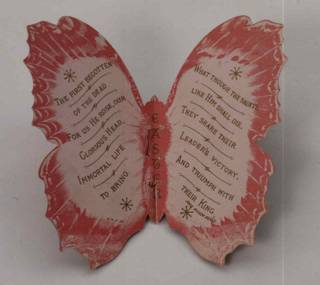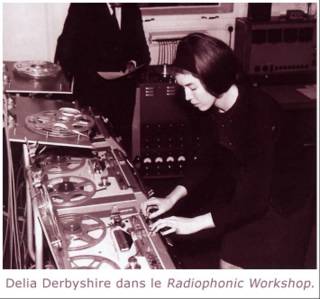The 2004 Olympics - Living in Seattle means never having to see Bob Costas
"The Canucks also aren't afraid to give airtime to losers--and not just the sentimental favorites who gamely finish long after the winners are showing their shoe logos to the crowd. This isn't the Olympic spirit in action. The Canadians show losers because they ARE losers."
Saturday, August 14, 2004

You pissed on my rug
"According to Canadian texts (six are cited), the United States planned to conquer and annex Canada during the Revolution, the War of 1812, the Civil War and at various points in between. During the Cold War, the United States repeatedly bullied Canada into supporting its aggressive military policies. Canadian officials hoped that NATO would evolve into a North Atlantic community that would act as a counterweight to U.S. influence in Canada, but in vain: Canadian governments had to toe the U.S. line or suffer humiliation. During the Cuban Missile Crisis, Prime Minister John G. Diefenbaker, concerned that Kennedy's belligerence might lead to a nuclear war, waited three days before announcing that Canadian forces had gone on the alert. In the next election, the Americans used their influence to topple the truculent prime minister. Diefenbaker's successor, Lester Pearson, aligned Canada more closely with the United States, but in 1965 he annoyed Lyndon Johnson by calling for a bombing pause and a negotiated settlement to the Vietnam War. In a meeting after the speech, Johnson grabbed Pearson by the lapels and shouted, 'You pissed on my rug.' Thus have Canadian texts immortalized the Johnson vernacular. "


it all started with Lani Guinier...
"On the (relatively) high road, the Guinier fight taught conservatives that Clinton was singularly susceptible to frontal media assault on 'controversial' social issues; on the low road, the Hill fight produced a cadre of conservatives committed to taking down the next Democratic president by means of mass-media sex-scandal. In this bitter sense, the Guinier episode set the terms for the torpedoing of national health care in 1993 94 and Clinton's later capitulation on welfare 'reform'; Hill, meanwhile, begat David Brock, who tripled the American Spectator's circulation and begat Richard Mellon Scaife and a host of Arkansas state troopers, who together begat Kenneth Starr, who begat Linda Tripp, who begat Monicamania, whose issue was still uncertain at press time. No doubt Anita Hill and Lani Guinier would prefer to leave a different legacy - which is, I surmise, one reason they have written their own accounts of their encounters with Washington at its worst."
(via Eschaton)


Ralph Waldo Emerson's free adapatation of part of the Vishnu Purana--Hamatreya
"Minott, Lee, Willard, Hosmer, Meriam, Flint,
Possessed the land, which rendered to their toil
Hay, corn, roots, hemp, flax, apples, wool, and wood.
Each of these landlords walked amidst his farm,
Saying, ''Tis mine, my children's, and my name's.
How sweet the west wind sounds in my own trees;
How graceful climb those shadows on my hill;
I fancy those pure waters and the flags
Know me as does my dog: we sympathize,
And, I affirm, my actions smack of the soil.'
Where are those men? Asleep beneath their grounds,
And strangers, fond as they, their furrows plough.
Earth laughs in flowers to see her boastful boys
Earth proud, proud of the earth which is not theirs;
Who steer the plough, but cannot steer their feet
Clear of the grave.
They added ridge to valley, brook to pond,
And sighed for all that bounded their domain,
'This suits me for a pasture; that's my park,
We must have clay, lime, gravel, granite-ledge,
And misty lowland where to go for peat.
The land is well, lies fairly to the south.
'Tis good, when you have crossed the sea and back,
To find the sitfast acres where you left them.'
Ah! the hot owner sees not Death, who adds
Him to his land, a lump of mould the more..."

blissblog
"If your classic rock drum sound is something like Baskerville or Times New Roman, then the drums in the Belgian stuff or early Eurohouse or The KLF is perhaps equivalent to Arial or Lucida Console or something of that ilk: streamlined, almost-naturalistic, with a hint of futurity and this-is-the-modern-world. But like your classic rock drum sound, the beat/font doesn't really draw attention to itself, it's functional--rhythm as division of time. Pure information. Of course rock drum sound hasn't always been like that--think of psychedelia's effects-laden beats: the billowing, phased drum-rolls on The Small Faces' 'Itchycoo Park' being equivalent perhaps to the trippy typography on all those Fillmore Ballroom posters for bands like Sopwith Camel and Jefferson Airplane, woogly and pendulous to the point of illegibility.
Then in the Seventies drums went 'naturalistic' again; a good sound meant clear and defined. (Exceptions: dub and dub-fiends like PiL and Martin Hannett; gamelan-aware postpunkers; Eno-linked or influenced stuff e.g. the splashy drums on 'Warning Sign' by Talking Heads; rock groups that used a lot of hand percussion perhaps; Arthur Russell obviously). Despite rave culture being the rebirth of psychedelia, the drums in house and early techno are for the most clean and stark, but that begins to change around 1993, leading to the current fontasia (forgive me!) of voluptuous texturhythm. So my challenge, to folks out there who actually know something about both dance music and graphic design (Matt? Julian House?), is to tabulate direct correspondences between the specific beat-signatures of auteur-producers and particular fonts. Who, for instance, is the Wings Dings of modern music? Who's really pushing it now in terms of approching the threshold of rhythmic illegibility? Alternatively, to break down the history of drums in pop music according to a similar schema. E.g. What's the equivalent of serif versus sans-serif? Would sans-serif = the postpunk fashion for not using ride-cymbal and hi-hats, because of its assocation with heavy rock?"
"If your classic rock drum sound is something like Baskerville or Times New Roman, then the drums in the Belgian stuff or early Eurohouse or The KLF is perhaps equivalent to Arial or Lucida Console or something of that ilk: streamlined, almost-naturalistic, with a hint of futurity and this-is-the-modern-world. But like your classic rock drum sound, the beat/font doesn't really draw attention to itself, it's functional--rhythm as division of time. Pure information. Of course rock drum sound hasn't always been like that--think of psychedelia's effects-laden beats: the billowing, phased drum-rolls on The Small Faces' 'Itchycoo Park' being equivalent perhaps to the trippy typography on all those Fillmore Ballroom posters for bands like Sopwith Camel and Jefferson Airplane, woogly and pendulous to the point of illegibility.
Then in the Seventies drums went 'naturalistic' again; a good sound meant clear and defined. (Exceptions: dub and dub-fiends like PiL and Martin Hannett; gamelan-aware postpunkers; Eno-linked or influenced stuff e.g. the splashy drums on 'Warning Sign' by Talking Heads; rock groups that used a lot of hand percussion perhaps; Arthur Russell obviously). Despite rave culture being the rebirth of psychedelia, the drums in house and early techno are for the most clean and stark, but that begins to change around 1993, leading to the current fontasia (forgive me!) of voluptuous texturhythm. So my challenge, to folks out there who actually know something about both dance music and graphic design (Matt? Julian House?), is to tabulate direct correspondences between the specific beat-signatures of auteur-producers and particular fonts. Who, for instance, is the Wings Dings of modern music? Who's really pushing it now in terms of approching the threshold of rhythmic illegibility? Alternatively, to break down the history of drums in pop music according to a similar schema. E.g. What's the equivalent of serif versus sans-serif? Would sans-serif = the postpunk fashion for not using ride-cymbal and hi-hats, because of its assocation with heavy rock?"
Friday, August 13, 2004
Bernd Heinrich's "Ravens in Winter" and "The Mind of the Raven" are excellent--
"'Klaus told me that whenever he gets mail, Jakob demands his fair portion of it,' says Heinrich, adding that it is Jakob's pleasure to shred junk mail into confetti. Jakob also insists on being given, for his destructive pleasure, cardboard boxes and mail-order catalogs. Finishing them off, Jakob gives Heinrich a mighty peck on the thigh. 'I was told he wanted the ballpoint pen with which I was taking notes,' he reports, informing us that he quickly surrendered the pen. "
"'Klaus told me that whenever he gets mail, Jakob demands his fair portion of it,' says Heinrich, adding that it is Jakob's pleasure to shred junk mail into confetti. Jakob also insists on being given, for his destructive pleasure, cardboard boxes and mail-order catalogs. Finishing them off, Jakob gives Heinrich a mighty peck on the thigh. 'I was told he wanted the ballpoint pen with which I was taking notes,' he reports, informing us that he quickly surrendered the pen. "
Thursday, August 12, 2004

from John Aubrey's "Wiltshire", how to make
Metheglyn-- (from Mistress Hatchman. This receipt makes good Metheglyn; I thinke as good as the Devises). Allow to every quart of honey a gallon of water; and when the honey is dissolved, trie if it will beare an egg to the breadth of three pence above the liquor; or if you will have it stronger putt in more honey. Then set it on the fire, and when the froth comes on the toppe of it, skimme it cleane; then crack eight or ten hen-egges and putt in the liquor to cleare it: two or three handfulls of sweet bryar, and so much of muscovie, and sweet marjoram the like quantity; some doe put sweet cis, or if you please put in a little of orris root. Boyle all these untill the egges begin to look black, (these egges may be enough for a hoggeshead,) then straine it forth through a fine sieve into a vessell to coole; the next day tunne it up in a barrell, and when it hath workt itself cleare, which will be in about a weeke's time, stop it up very close,
and if you make it strong enough, sc. to carry the breadth of a
sixpence, it will keep a yeare. "

Wednesday, August 11, 2004

Michael Mann on Collateral "'Motion picture film could not see the world that these characters inhabit. It can't see into the night. The environments, where there's a red desert of depopulated refineries just at the moment when Max and Vincent become personal for the first time. Film can't see that stuff. [Digital technology is] a very painterly medium. You can manipulate it a lot as well as being able to see into the night. [There's a] crime scene, you're seeing two miles away, downtown, little American flag on top of the building. It's not just the seeing, though. It lends itself to taking atmosphere and building landscapes and pushing them into a mood and affect a scene and affect the way you feel about these characters.' "

Alex Cox watches "Man on Fire" and has some questions--
"The ICT was set up in 1999 with a grant of $50m from the US Army to create training simulators. In the aftermath of 9/11, the A-list creatives were supposed to come up with scenarios by which terrorists might seek to attack the USA. Would it be naive to question whether this was a one-way street? Or whether the Pentagon, which already maintained film liaison offices in Los Angeles, had a few ideas for the A-list talent to work on, as well? "
"The ICT was set up in 1999 with a grant of $50m from the US Army to create training simulators. In the aftermath of 9/11, the A-list creatives were supposed to come up with scenarios by which terrorists might seek to attack the USA. Would it be naive to question whether this was a one-way street? Or whether the Pentagon, which already maintained film liaison offices in Los Angeles, had a few ideas for the A-list talent to work on, as well? "

great director Anthony Mann on the big screen in NYC (oh well)--including the early noirs (with cinematographer John Alton), the westerns (with James Stewart) and the great widescreen epics ("El Cid" and "The Fall of the Roman Empire")...

Subscribe to:
Comments (Atom)






